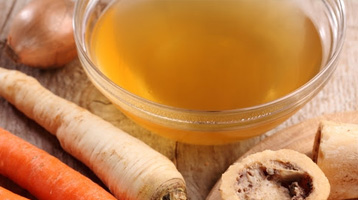Bone Broth: The Perfect Paleo Partner
[shareaholic app="share_buttons" id="27983777"]
The True Story Behind Bone Broth
There’s been an increase in the popularity of bone broths over the past couple years, and much of it can be attributed to its health benefits. Bone broths can include high levels of both protein and minerals, and the health benefits have been known for hundreds of years. Additionally, bone broths have nutrients such as glycine which help support your digestion system. Furthermore, the presence of gelatin and proline in bone broths help to support skin health…So where did bone broth originate?
Bone broths first became popular in mid-18th century France, where travelers would stop at inns for the night. The innkeepers would serve bone broths to their guests, and it was believed that the broths would help improve people’s health during their travels. Fast forward to the 21st century, and bone broths have gained a resurgence as a staple of the popular Paleo Diet, due to its low-carb, high-protein composition. Even current Los Angeles Lakers’ great Kobe Bryant has publicly applauded the benefits of bone broth, where he specifically mentioned that it helped increase his energy levels and reduced his inflammation. So what exactly is in it?
According to NourishedKitchen.com: “Bone Broth is typically made with bones and can contain a small amount of meat adhering to the bones. As with stock, bones are typically roasted first to improve the flavor of the bone broth. Bone broths are typically simmered for a very long period of time (often in excess of 24 hours), with the purpose being not only to produce gelatin from collagen-rich joints but also to release minerals from bones. At the end of cooking, the bones should crumble when pressed lightly between your thumb and forefinger.”
In terms of uses, you can simply drink the broth with some added seasonings, or you can use the bone broth in soups, sauces, and to braise meats and vegetables. Try some out for yourself in your next GrubMarket order!


